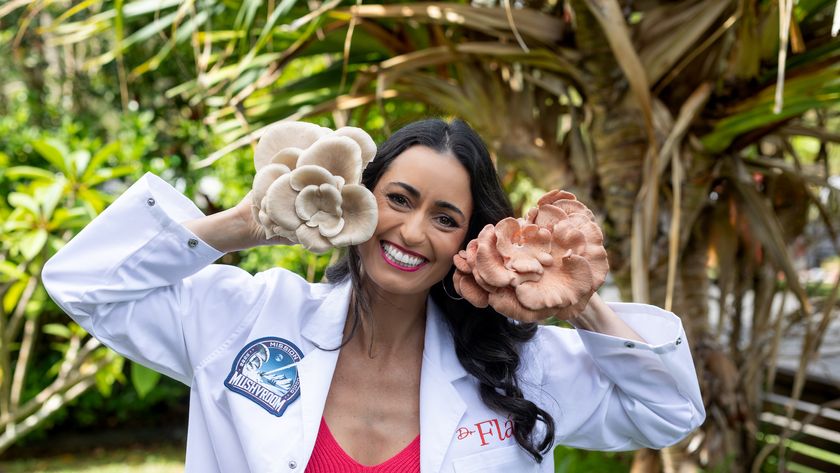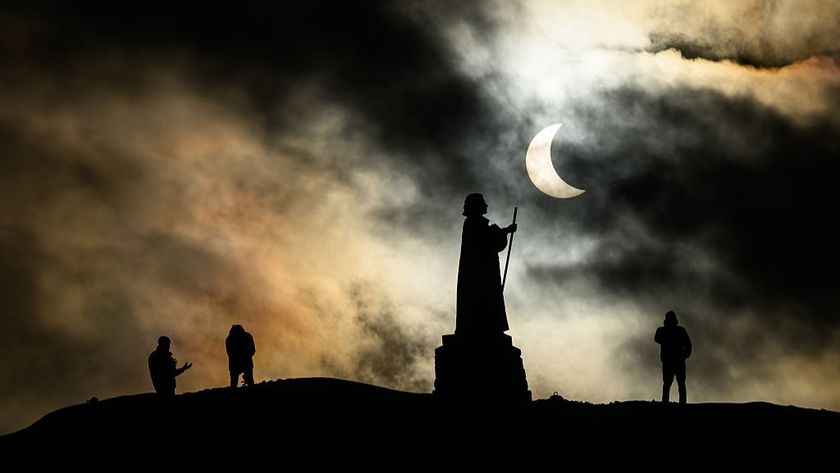Recent Photos From Curiosity Rover Show 'Megaripples' and Wheel Damage

The Curiosity rover is approaching its first half-marathon on Mars, and what a busy time it has been since it landed more than four and a half Earth years ago. Its travels to and around Mount Sharp have not been without their share of drama. In between its main science mandate of finding signs of ancient habitable environments on the Martian mountain, the rover has battled problems with its wheels.
As of Sol 1690 (a sol is one Martian day, approximately 24 hours and 39 minutes in Earth time), the rover has driven 10.14 miles in and around Martian terrain ranging from ancient stream beds, to active sand dunes, to bare bedrock. Observations in the past month have focused on "megaripples" that likely change regularly with the changing wind patterns on Mars. The rover has also done imaging of Phobos, a moon of Mars, to learn more about the tiny world's orbit.
You can see some of the latest images from the Curiosity rover in this slideshow, and follow along nearly sol by sol as members of the rover team describe their observations and challenges. The mission was originally slated for 2 years, but is now in its second extended phase and will go until at least September 2018.

Sol 1686: Peering at 'megaripples'
The photo above shows Curiosity's view of megaripples after driving 60 feet (18.3 meters). According to NASA, these features are darker and larger than other dunes that the rover viewed earlier in its mission, called the Bagnold Dunes. The two rocks in the foreground were the targets for Curiosity to sample. Called Newport Ledge and Sugarloaf Mountain, they were examined for grain size, distribution, stratification and layering. These observations help geologists to learn more about the local history of the area.

Sol 1687: Looking for windy changes
During two Martian days sitting at the megaripples, Curiosity did a bonanza of imaging and analysis. Besides taking visual-wavelength pictures of the area, the rover's Mastcam instrument examined an observation target called Cobbosseecontee Lake at specific light wavelengths in order to figure out what iron-bearing minerals are in the sands. Some of the imaging was done every evening specifically to see if there were any changes in the sands from day to day, which could happen as winds blew across the features.
"These change detection images help the team understand if (or how) wind activity and direction are changing as we leave the Bagnold dunes," NASA's Michelle Minitti wrote.

Sols 1688-1690: Wheel scuff observations
Damage on Curiosity's wheels was first monitored in 2013 when NASA officials noticed that the rover was accumulating wear and tear faster than anticipated. NASA has made accommodations to the rover's driving habits (such as picking softer ground) to slow the damage. In March, NASA discovered breaks in the raised wheel treads, called grousers, but added that the rover will be able to reach all its science targets on Mount Sharp. Between sols 1688 and 1690, Curiosity performed many different observations, including looking at materials inside a wheel scuff on the Martian ground.
Get the Space.com Newsletter
Breaking space news, the latest updates on rocket launches, skywatching events and more!

Sol 1691: A moon, and interesting rocks
Curiosity then hit the road again and then made a premature stop to quickly look at some interesting rocks along the way. Chemical analysis and imaging was performed at the rocks, which had whimsical names such as Ike's Point, King's Point, and Green Nubble.
On the next Martian day, Curiosity took a look at one of the Martian moons, Phobos. The aim was to watch it move in front of the sun to better refine its orbit. While Curiosity was looking up, the rover looked at clouds and atmospheric dust.

Sol 1693-94: On the road again
Just before Curiosity hit the road again, NASA conducted a series of remote science observations, which included looking at the sky, performing atmospheric measurements, and examining the bedrock around the rover. NASA also planned to take some images around the rover and conduct another suite of observations of Phobos, including a search for dust devils.
Originally published on Seeker.
Join our Space Forums to keep talking space on the latest missions, night sky and more! And if you have a news tip, correction or comment, let us know at: community@space.com.

Elizabeth Howell (she/her), Ph.D., was a staff writer in the spaceflight channel between 2022 and 2024 specializing in Canadian space news. She was contributing writer for Space.com for 10 years from 2012 to 2024. Elizabeth's reporting includes multiple exclusives with the White House, leading world coverage about a lost-and-found space tomato on the International Space Station, witnessing five human spaceflight launches on two continents, flying parabolic, working inside a spacesuit, and participating in a simulated Mars mission. Her latest book, "Why Am I Taller?" (ECW Press, 2022) is co-written with astronaut Dave Williams.











